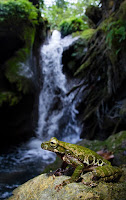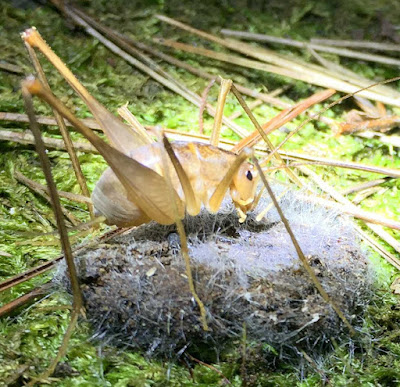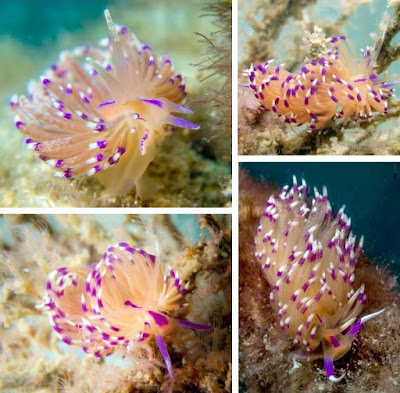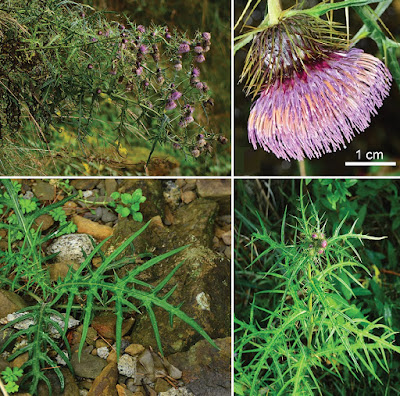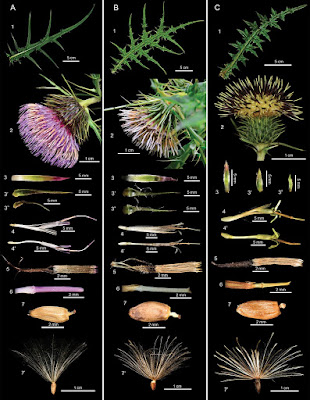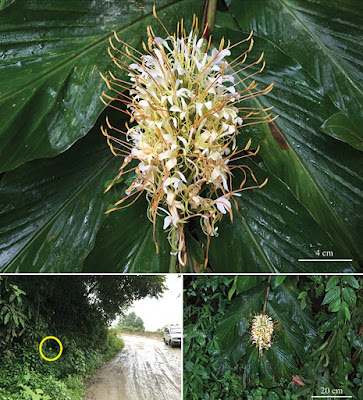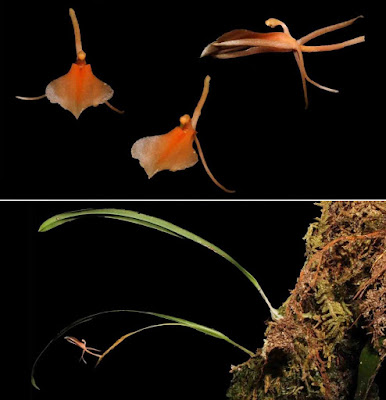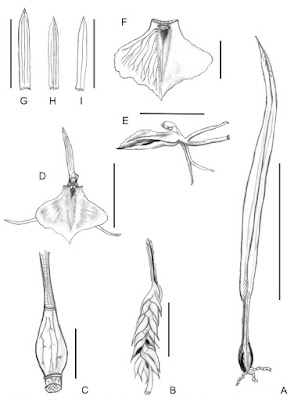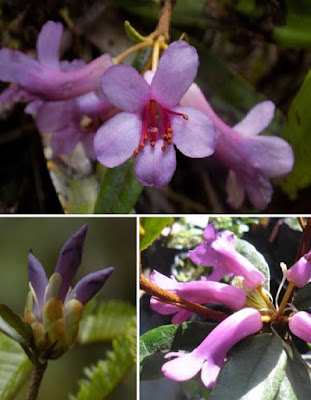[Most Recent Entries] [Calendar View]
Monday, February 25th, 2019
| Time | Event | ||||||||
| 11:08a | [Herpetology • 2019] Charadrahyla sakbah • A New Species of Charadrahyla (Anura: Hylidae) from the Cloud Forest of western Oaxaca, Mexico
Abstract A new species of treefrog from the genus Charadrahyla is described from the cloud forest of western Sierra Madre del Sur of Oaxaca, Mexico. Charadrahyla sakbah sp. nov., is distinguished from the rest of the species in the genus by the large body size (81.15–85.75 mm and 67.91–73.21 mm in adult females and males respectively), axillary membrane, adult males with hypertrophied webbings between toes I and II, nuptial excrescences, one enlarged conical tubercle on either side of vent, vocal slits absent, and sexual dimorphism in the snout shape in dorsal profile (rounded and acuminate in females and males respectively). The hypertrophied webbings are a unique character among other hylids of Middle America, and are only present in C. trux, C. tecuani and the species described herein. These three species inhabit the cloud forest of the Sierra Madre del Sur, and are probably closely related. However, more detailed phylogenetic analyses are needed to define the internal relationships of the genus. The cloud forest in the Sierra Madre del Sur continues to be known for a high number of endemic species. However, the cloud forest faces several threats due to its limited distribution that make it a priority ecosystem for conservation. Keywords: Amphibia, cloud forest, highlands, hylids, Sierra Madre del Sur
Charadrahyla sakbah sp. nov. Jiménez-Arcos, Calzada-Arciniega, Alfaro-Juantorena, Blair & Parra-Olea Mixteca Cloud-forest Treefrog, Rana arborícola de la Mixteca Etymology. The specific epithet is taken from the Mixteco language word “sa’bah” which mean “frog”. This is recognition to the San Isidro Paz y Progreso community for their conservation efforts towards their natural and cultural resources. Víctor H. Jiménez-Arcos, Rafael Alejandro Calzada-Arciniega, Liz A. Alfaro-Juantorena, Leopoldo Vázquez-Reyes, Christopher Blair and Gabriela Parra-Olea. 2019. A New Species of Charadrahyla (Anura: Hylidae) from the Cloud Forest of western Oaxaca, Mexico. Zootaxa. 4554(2); 371–385. DOI: 10.11646/zootaxa.4554.2.3 Resumen: Se describe una nueva especie de rana arborícola del género Charadrahyla del bosque nublado de la Sierra Madre del Sur del oeste de Oaxaca, México. Charadrahyla sakbah sp. nov., se distingue del resto de las especies del género por su talla corporal grande (81.15–85.75 mm y 67.91–73.21 mm en hembras y machos adultos respectivamente), membrana axilar, machos adultos con membrana hipertrofiada entre los dedos I y II, presencia de excrecencias nupciales, un tubérculo cónico agrandado a cada lado de la cloaca, ausencia de hendiduras bucales y dimorfismo sexual en la forma de la nariz en vista dorsal (redonda y acuminada en hembras y machos respectivamente). La membrana hipertrofiada es una característica única entre otros hylidos de Mesoamérica y solo está presente en C. trux, C. tecuani y la especie descrita aquí. Estas tres especies habitan en el bosque nublado de la Sierra Madre del Sur, y probablemente estén estrechamente emparentadas. Sin embargo, son necesarios trabajos filogenéticos subsecuentes para definir con precisión las relaciones internas del género. El bosque de niebla de la Sierra Madre del Sur destaca por el alto número de especies endémicas. Sin embargo, enfrenta diversas amenazas debido principalmente a su limitada distribución, que lo convierte en un ecosistema prioritario para la conservación. Palabras clave: bosque mesófilo, tierras altas, hylidos, Sierra Madre del Sur | ||||||||
| 11:14a | [Entomology • 2019] Review of the Subgenus Tachycines (Gymnaeta) Adelung, 1902 (Orthoptera, Rhaphidophoridae, Aemodogryllinae, Aemodogryllini)
Abstract In this work, ten new species of Tachycines (Gymnaeta) are identified and described from China: Tachycines (Gymnaeta) parvus sp. nov., Tachycines (Gymnaeta) lushuicus sp. nov., Tachycines (Gymnaeta) yueyangensis sp. nov., Tachycines (Gymnaeta) lii sp. nov., Tachycines (Gymnaeta) dianxicus sp. nov., Tachycines (Gymnaeta) pallidus sp. nov., Tachycines (Gymnaeta) dispar sp. nov., Tachycines (Gymnaeta) verus sp. nov., Tachycines (Gymnaeta) vicinus sp. nov., Tachycines (Gymnaeta) maoershanensis sp. nov.. Two subspecies of Gorochov et al. (2006): T. (G.) ferecaecus ferecaecus (Gorochov, Rampini & Di Russo, 2006) and T. (G.) ferecaecus proximus (Gorochov, Rampini & Di Russo, 2006) are elevated as two independent valid species. Also two subspecies of Gorochov (2010): T. (G.) sichuanus sichuanus (Gorochov, 2010) and T. (G.) sichuanus altimontanus (Gorochov, 2010) can be elevated as two independent species. Three synonyms: Tachycines (Gymnaeta) tianmushanensis Liu & Zhang, 2001 syn. n., Tachycines (Gymnaeta) improvisus (Gorochov, 2010) syn. n. and T. (G.) aspes (Rampini, Di Russo & Cobolli, 2008) syn. n. are proposed. A new combination Eutachycines crenatus (Gorochov, Rampini & Di Russo, 2006) comb. nov. is involved. A key to the species of Tachycines (Gymnaeta) is provided. Keywords: Orthoptera, Tachycines (Gymnaeta), new species, review Tachycines (Gymnaeta) parvus sp. nov. Tachycines (Gymnaeta) lushuicus sp. nov. Tachycines (Gymnaeta) yueyangensis sp. nov. Tachycines (Gymnaeta) lii sp. nov. Tachycines (Gymnaeta) dianxicus sp. nov. Tachycines (Gymnaeta) pallidus sp. nov. Tachycines (Gymnaeta) dispar sp. nov. Tachycines (Gymnaeta) verus sp. nov. Tachycines (Gymnaeta) vicinus sp. nov. Tachycines (Gymnaeta) maoershanensis sp. nov. T. (G.) ferecaecus (Gorochov, Rampini & Di Russo, 2006) T. (G.) proximus (Gorochov, Rampini & Di Russo, 2006) T. (G.) sichuanus (Gorochov, 2010) T. (G.) altimontanus (Gorochov, 2010) Yanyan Qin, Xianwei Liu and Kai Li. 2019. Review of the Subgenus Tachycines (Gymnaeta) Adelung, 1902 (Orthoptera, Rhaphidophoridae, Aemodogryllinae, Aemodogryllini). Zootaxa. 4560(2); 273–310. DOI: 10.11646/zootaxa.4560.2.3 | ||||||||
| 11:22a | [Mollusca • 2019] Unidentia aliciae • The Formerly Enigmatic Unidentiidae in the Limelight Again: A New Species of the Genus Unidentia (Gastropoda: Nudibranchia) from Thailand
Abstract An integrative molecular and morphological study is presented for the family Unidentiidae. Molecular phylogenetic analyses were conducted with the inclusion of all previous and newly obtained molecular data for the family Unidentiidae Millen & Hermosillo 2012. A new species of the genus Unidentia Millen & Hermosillo 2012, Unidentia aliciae sp. nov., is described from Thailand as part of an inventory of sea slugs at Koh Tao. All up-to-date available morphological data for the species of the genus Unidentia is for the first time summarized. Morphological differences among the different species of Unidentia are clarified showing that every species has its own distinguishable morphological traits. According to the new molecular and morphological data, the family Unidentiidae is re-confirmed as a well-supported taxon of the aeolidacean nudibranchs. The taxonomy and phylogeny of the Aeolidacea in the light of the family Unidentiidae is briefly discussed and necessity of a fine-scale and narrowly-defined taxa approach instead of a ‘‘superlumping’’ one is highlighted. Keywords: Mollusca, morphological and molecular data, new species, nudibranchs, unidentiids
Tatiana Korshunova, Rahul Mehrotra, Spencer Arnold, Kennet Lundin, Bernard Picton and Alexander Martynov. 2019. The Formerly Enigmatic Unidentiidae in the Limelight Again: A New Species of the Genus Unidentia from Thailand (Gastropoda: Nudibranchia). Zootaxa. 4551(5); 556–570. DOI: 10.11646/zootaxa.4551.5.4 | ||||||||
| 11:53a | [Botany • 2019] Cirsium tatakaense (Compositae) • A New Species from Taiwan
Abstract A new species of Cirsium, Cirsium tatakaense Y.H.Tseng & C.Y.Chang, from central-southern Taiwan is described and illustrated. This species is similar to C. kawakamii Hayata in leaf shape, achene and chromosome number (2n = 64), but can be readily distinguished from C. kawakamii by the narrower leaf lobes, usually higher number of florets and phyllaries, the purplish-red corolla (vs. white) and larger pollen grains. A key to the species of Cirsium in Taiwan is also presented. Keywords: New species, Chromosome number, Cirsium tatakaense, Cirsium kawakamii, Compositae, Taiwan
Cirsium tatakaense Y.H.Tseng & C.Y.Chang, sp. nov. Diagnosis: Differs from C. kawakamii in having narrower leaf lobes (7.3−11.7 mm), usually more florets, (136)161−308 and phyllaries (111−199), a purplish-red corolla and larger pollen grains (34.2−42.6 × 35.2−44.7 μm). Distribution: Endemic species of Taiwan. Cirsium tatakaense is located in open areas of cloud forests of vegetation zones from the Quercus to Abies forest zone at alt. 2000−3000 m in central-southern Taiwan (Fig. 3). Based on the geographical climatic regions and vegetation zones (Su 1984, 1985), C. tatakaense is distributed mainly in the central-west inland regions. Cirsium tatakaense has been discovered in sunny environments, such as roadsides and forest margins, concentrated on the upper portions of hills along Provincial Highway no. 18. Miscanthus transmorrisonensis Andersson (Poaceae), Rubus taitoensis Hayata (Rosaceae) and Senecio nemorensis L. var. dentatus (Kitam.) H. Koyama (Compositae) are often discovered with C. tatakaense. Sometimes, C. arisanense Kitam. and C. ferum Kitam. are found near to C. tatakaense; however, no hybrid individual between these species has been observed. Chinese name: Ta-ta-jia-ji (塔塔加薊). Etymology: The species epithet tatakaense derives from the type location Tataka in Nantou County. Chih-Yi Chang, Hsy-Yu Tzeng andYen-Hsueh Tseng. 2019. Cirsium tatakaense (Compositae), A New Species from Taiwan. PhytoKeys. 117: 119-132. DOI: 10.3897/phytokeys.117.29380 | ||||||||
| 12:15p | [Botany • 2019] Hedychium ziroense (Zingiberaceae) • A New Species of Ginger Lily from Northeast India
Abstract We describe Hedychium ziroense sp. nov. from Northeast India (NE India) which was discovered during one of our recent botanical explorations in Arunachal Pradesh. We provide detailed morphological comparison of this species with four other Hedychium species (H. griersonianum R.M.Sm., H. ellipticum Buch.-Ham. ex Sm., H. gomezianum Wall. and H. yunnanense Gagnep.), with which it shares some morphological similarities. The new species is characterised by a dense cylindrical spike, pubescent rachis, folded bracts, 2–3 flowers per cincinnus, deeply cleft labellum and a distinctive late monsoonal flowering phenology from August to September. Keywords: Apatani, Arunachal Pradesh, Hedychium, taxonomy, Ziro
Hedychium ziroense V.Gowda & Ashokan, sp. nov. Diagnosis: Based on inflorescence shape and floral characters such as flower colour, relative length of filament to the labellum, relative length of corolla lobes to lateral staminodes and labellum, Hedychium ziroense V.Gowda & Ashokan, sp. nov. is morphologically similar to H. griersonianum R.M.Sm., H. ellipticum Buch.-Ham. ex Sm., H. gomezianum Wall. and H. yunnanense Gagnep., but it can be easily distinguished from the aforementioned species by lamina length (up to 60 cm long in H. ziroense vs. 40 cm or less in H. griersonianum, H. ellipticum, H. gomezianum and H. yunnanense), bract length (4 cm or more in H. ziroense and less than 4 cm in H. griersonianum, H. ellipticum, H. gomezianum and H. yunnanense), number of flowers per cincinnus (2-3 flowered in H. ziroense vs. 1-flowered in H. griersonianum, H. ellipticum, H. gomezianum and H. yunnanense), relative lengths of bract and calyx (bract always longer than calyx in H. ziroense vs. bract length equal or less compared to calyx in H. griersonianum, H. ellipticum, H. gomezianum and H. yunnanense) and anther colour (orange in H. ziroense vs. crimson in H. griersonianum, orange-red in H. ellipticum, red in both H. gomezianum and H. yunnanense), (Figs 2, 3 and 4; Table 1).
Distribution and habitat: This species is known only from collection along road banks on the Itanagar-Ziro road, Lower Subansiri District, Arunachal Pradesh at an elevation of more than 1700 m. Etymology and vernacular name: The specific epithet, “ziroense”, is derived from the type locality ‘Ziro’, the closest town to where the species was found. The town of Ziro is the headquarters of Lower Subansiri District, Arunachal Pradesh. Ziro is also the name of the native tribal inhabitants of the valley much before the arrival and subsequent colonisation of Apatani tribe (Ngunu Ziro pers. com.). In Apatani language, members of Hedychium are known by the common name “papi” (Bouchery 2016). Ajith Ashokan and Vinita Gowda. 2019. Hedychium ziroense (Zingiberaceae), A New Species of Ginger Lily from Northeast India. PhytoKeys. 117: 73-84. DOI: 10.3897/phytokeys.117.24951 | ||||||||
| 12:45p | [Botany • 2019] Stichorkis davidlohmanii (Orchidaceae: Malaxideae) • A New Species from the southern Philippines
ABSTRACT A new Philippine endemic species, Stichorkis davidlohmanii, is herein described and illustrated. This new species is comparable to S. compressa but distinct by its obovate, slightly conduplicate labellum with a blunt, obtusely rounded when flattened apex. KEY WORDS: Malaxideae; New species, Orchidaceae; Philippines, Plant Taxonomy, Stichorkis, Tropical botany.
Stichorkis davidlohmanii Naive, Cootes & Ormerod, sp. nov. Diagnosis: Similar to Stichorkis compressa (Blume) J.J. Wood. However, S. davidlohmanii differs significantly in having these following characters: not flattened pseudobulbs, obovate, slightly conduplicate labellum with a blunt, obtusely rounded when flattened apex and a circular in outline anther cap. Distribution: At present, S. davidlohmanii is a Philippine endemic species and is only known from its type locality. Ecology: Found growing along with moss cushions in the base of the trunk in the primary broad-leaved montane forests with humid and close canopy environment at elevations between 1000 to 1300 m asl. Etymology: This species is named in honor of Prof. Dr. David J. Lohman to recognize his efforts to document, study, and preserve the biota of Southeast Asia while mentoring the next generation of scientists, including the first author. Mark Arcebal K. Naive, Jim Cootes and Paul Ormerod. 2019. Stichorkis davidlohmanii (Orchidaceae; Malaxideae), A New Species from the southern Philippines. Taiwania. 64(1); 65-68. DOI: 10.6165/tai.2019.64.65 | ||||||||
| 12:49p | [Botany • 2018] Rhododendron meagaii (Ericaceae) • A New Species of Rhododendron Subgenus Vireya from Papua, Indonesia
ABSTRACT Rhododendron meagaii, is described and illustrated as a new species in subgenus Vireya (Ericaceae) from Mount Salju, District of Abenaho, Yalimo Regency, Papua Province, Indonesia. Characters distinguishing this new species from related species are discussed. Key words: District of Abenaho, New Guinea, new species, Papua Province, Rhododendron meagaii. Rhododendron meagaii Mambrasar & Hutabarat spec. nov. Type: Indonesia, Papua Province, Yalimo Regency, Abenaho District, Mount Salju, 23 May 2016, Michael Mambrasar 239 (Holotype: BO! iso: E! K!). Diagnosis. Distinct in section Hadranthe Schltr. in having the combination of characters: elliptic leaves, long stalked dendroid scales, a glabrous corolla and stamens of irregular lengths. Etymology. Name in honour of Organes Meaga (†), Kebun Raya Biologi Wamena technician who helped in collecting this species. Rhododendron meagaii Mambrasar & Hutabarat, spec. nov. Trima kasih Almarhum Organes Meagaii pahlawan botani dari Kebun Biologi Wamena. Jasamu akan selalu dikenang melalui nama ilmiah dari Rhododendron ini........ facebook.com/photo.php?fbid=102166337573 ABSTRAK: Rhododendron meagaii, dipertelakan dan digambar sebagai jenis baru pada submarga Vireya (Ericaceae) dari Gunung Salju, Distrik Abenaho, Kabupaten Yalimo, Provinsi Papua, Indonesia. Didiskusikan pula karakter yang membedakan jenis baru ini dengan jenis yang terdekat. Kata kunci: Distrik Abenaho, jenis baru, Provinsi Papua, Pulau Nugini, Rhododendron meagaii. Mambrasar, Y. M. & Hutabarat, P. W. K. 2018. Rhododendron meagaii, jenis baru Rhododendron submarga Vireya (Ericaceae) dari Papua, Indonesia. Reinwardtia. 17(2); 97‒100. |
| << Previous Day |
2019/02/25 [Calendar] |
Next Day >> |






